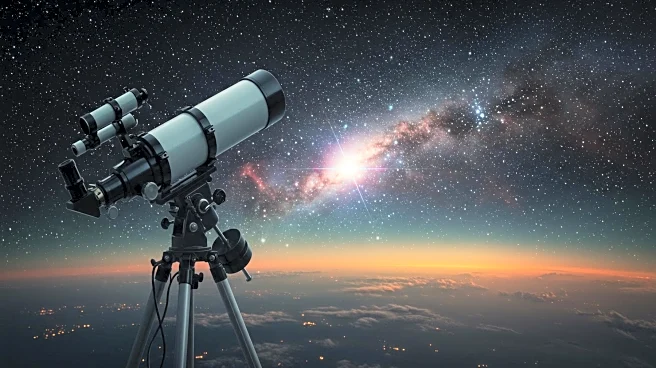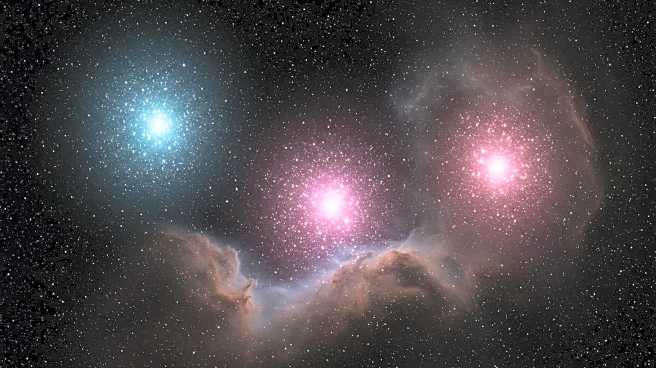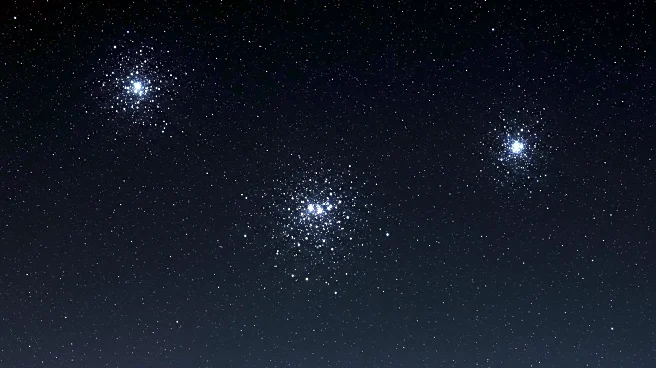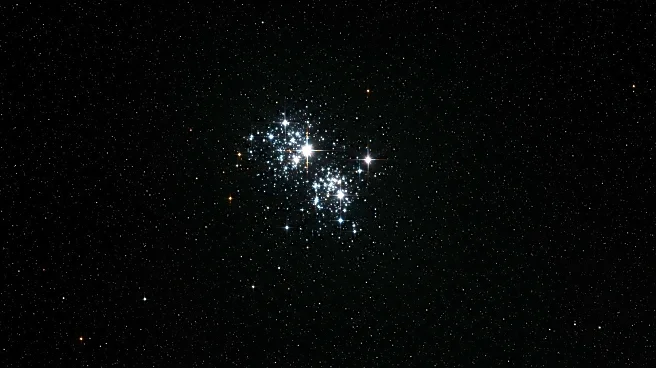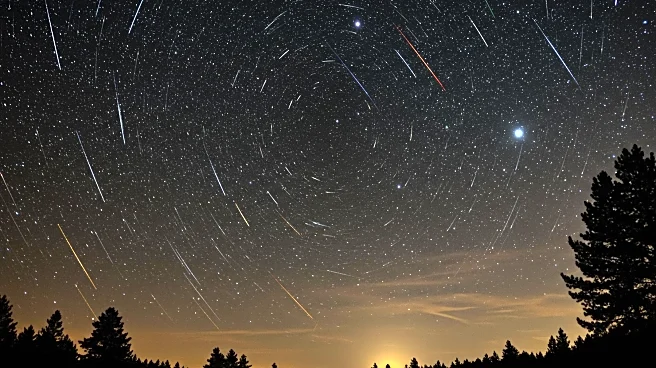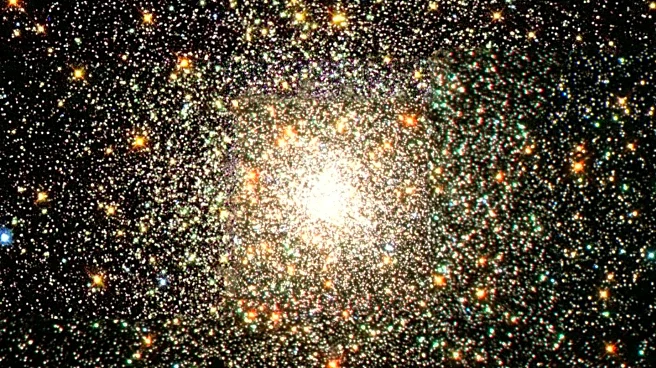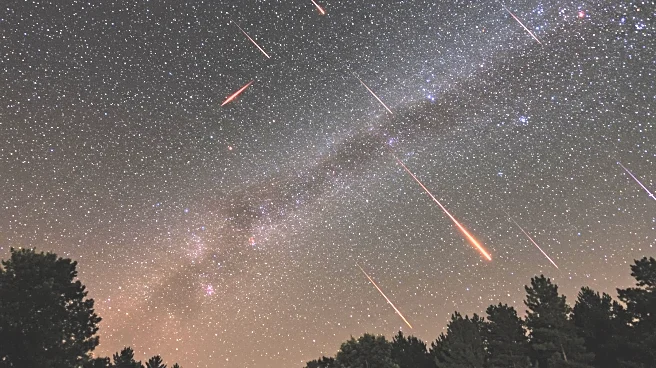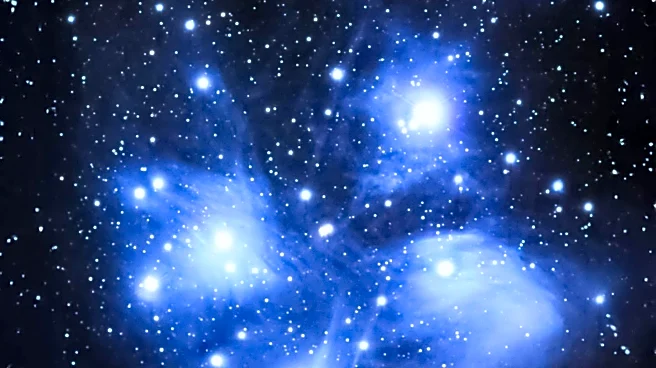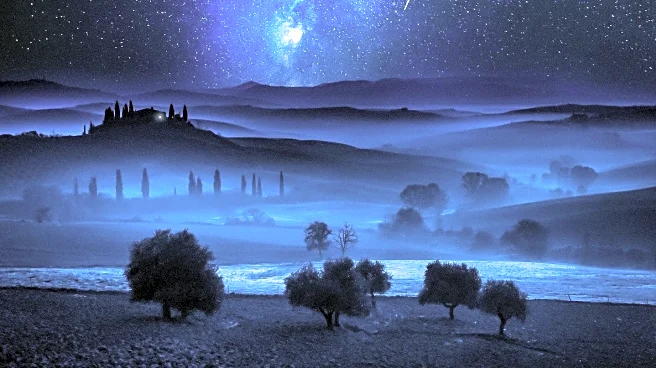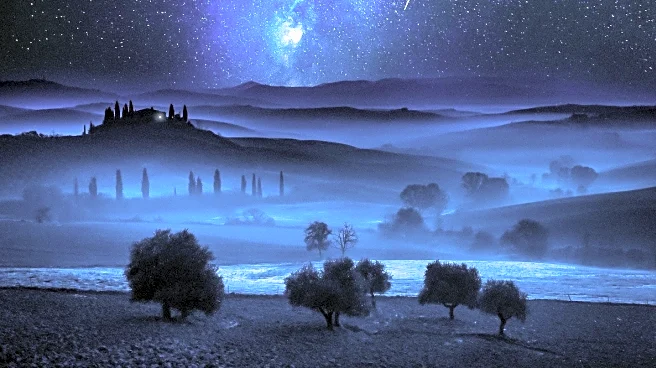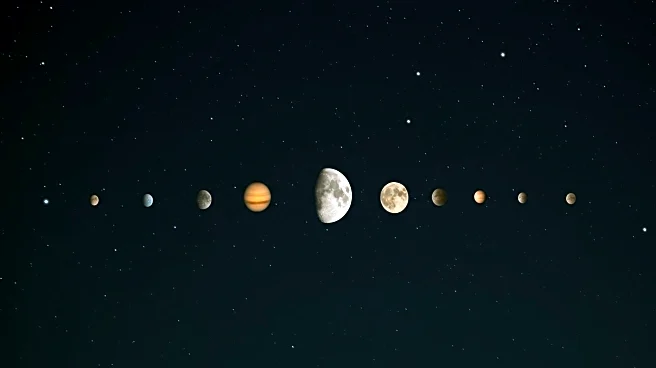What's Happening?
In August 2025, skywatchers in the northern hemisphere will have the opportunity to observe three prominent star clusters. These clusters, known as the Great Hercules Cluster, the Hyades, and the Pleiades, will be visible under optimal conditions during mid-August nights. Star clusters are groups of stars formed from the same interstellar cloud, categorized as either open or globular clusters. Open clusters, like the Hyades and Pleiades, are typically found in the Milky Way's spiral arms, while globular clusters, such as the Great Hercules Cluster, reside in the galactic halo. The Great Hercules Cluster, located 25,000 light-years away in the constellation Hercules, can be spotted between the stars Vega and Arcturus. The Hyades, one of the closest open clusters to Earth, is visible in the constellation Taurus, while the Pleiades, known for its seven brightest stars, can be seen above the Hyades in the early morning sky.
Why It's Important?
The visibility of these star clusters offers a unique opportunity for amateur astronomers and stargazers to engage with the night sky, fostering interest in astronomy and science. Observing these clusters can enhance public understanding of stellar formations and the structure of the Milky Way. The event also highlights the importance of preserving dark sky locations, which are crucial for astronomical observations. This celestial event may inspire educational programs and community events focused on astronomy, potentially increasing public interest in space exploration and scientific research.
What's Next?
As the date approaches, astronomy clubs and educational institutions may organize viewing events and workshops to educate the public about star clusters and their significance. The availability of telescopes and binoculars will be crucial for those wishing to observe these clusters in detail. Additionally, advancements in smartphone astronomy apps could assist enthusiasts in locating these celestial formations. The event may also prompt discussions on light pollution and its impact on astronomical observations, encouraging efforts to protect dark sky areas.
Beyond the Headlines
The observation of star clusters can deepen our understanding of stellar evolution and the dynamics of the Milky Way. These clusters serve as natural laboratories for studying the life cycle of stars and the gravitational interactions within star systems. The event may also spark interest in astrophotography, allowing photographers to capture the beauty of the night sky and share it with a wider audience. Furthermore, the visibility of these clusters underscores the importance of international collaboration in space research, as astronomers worldwide contribute to our knowledge of the universe.
